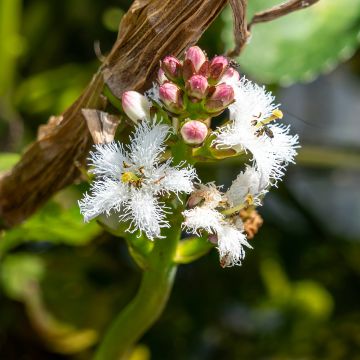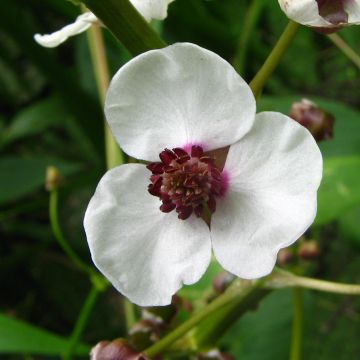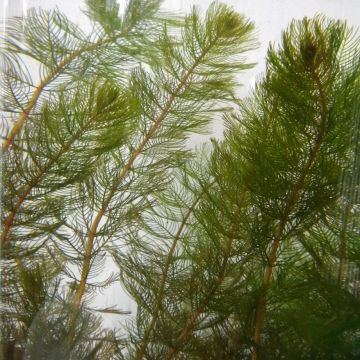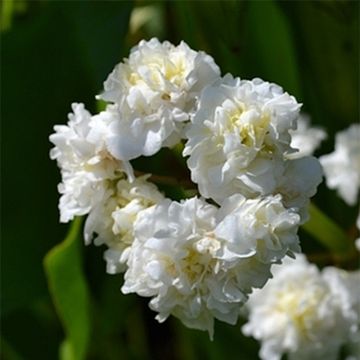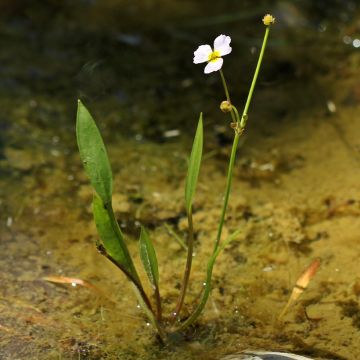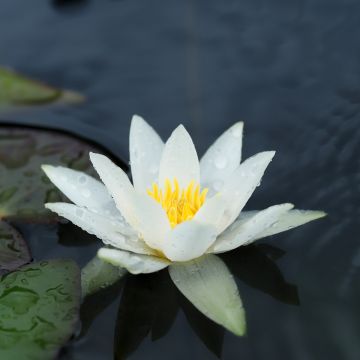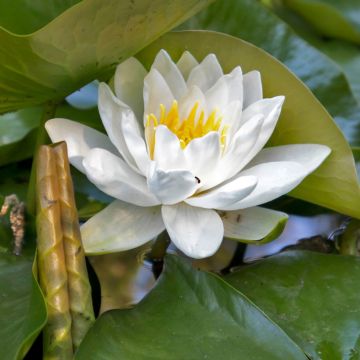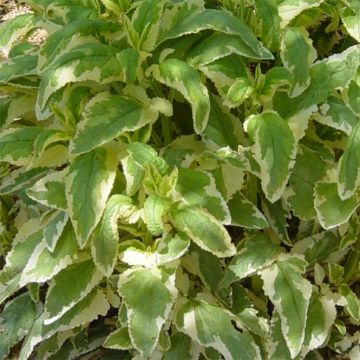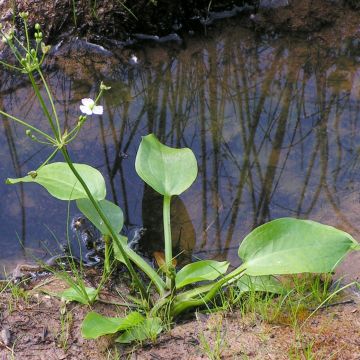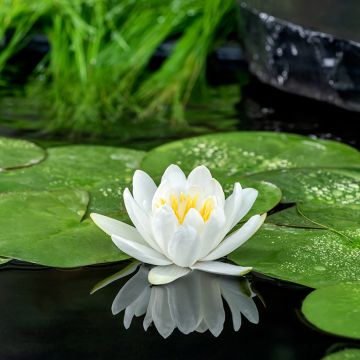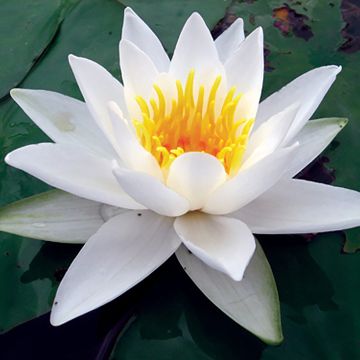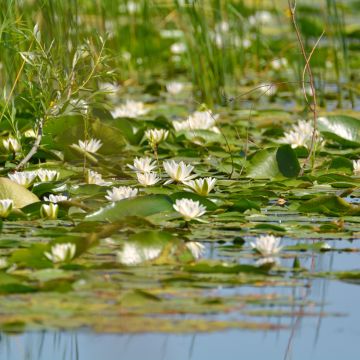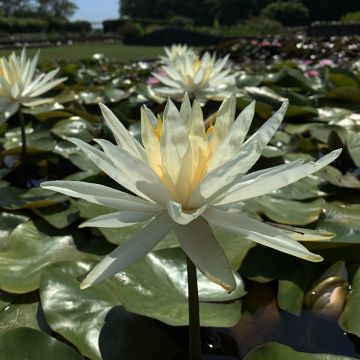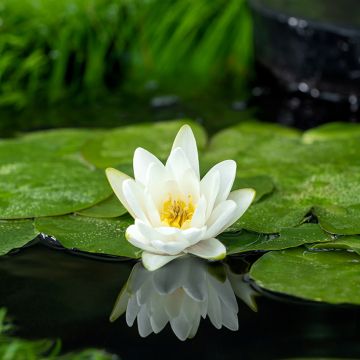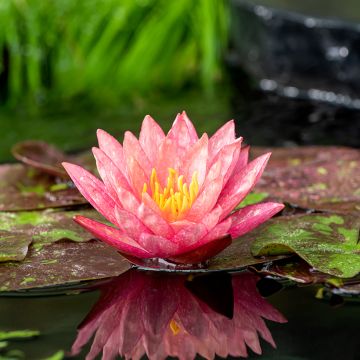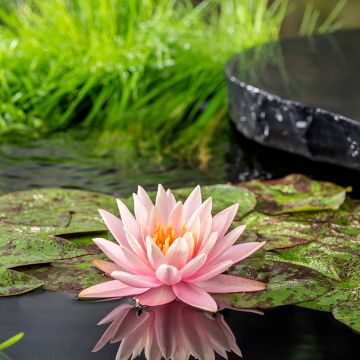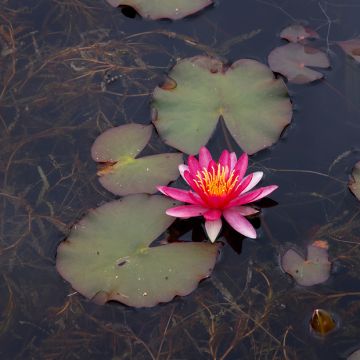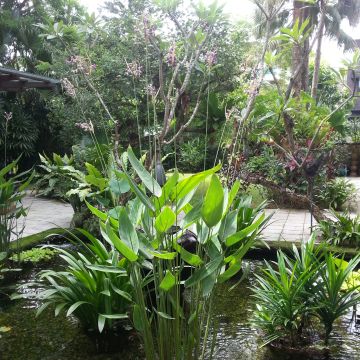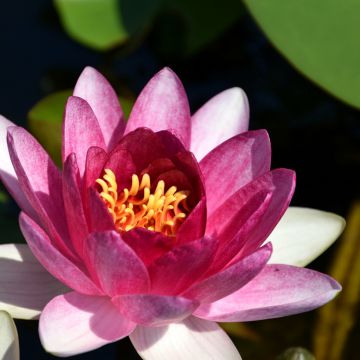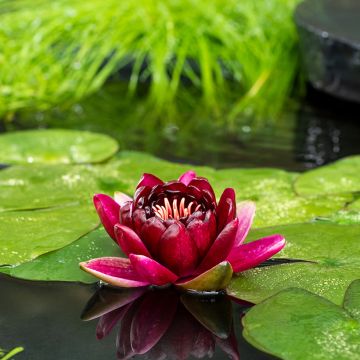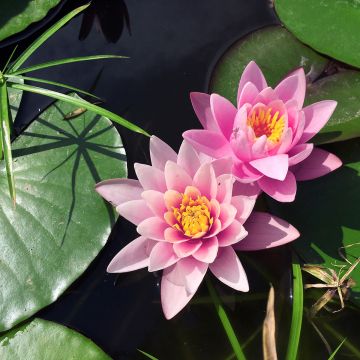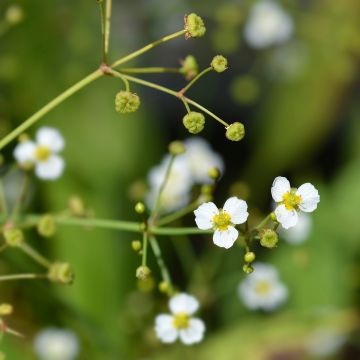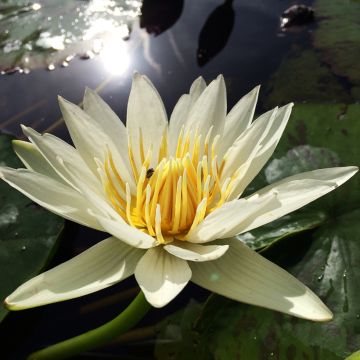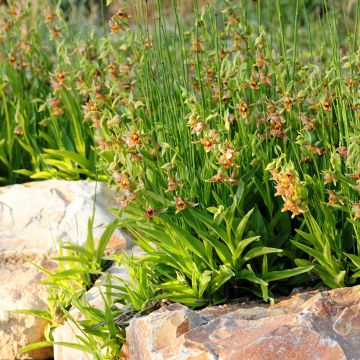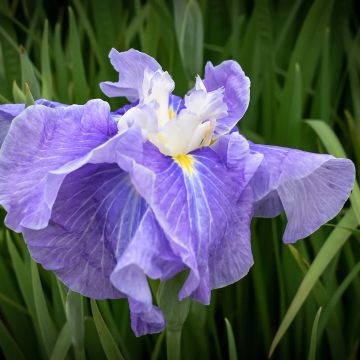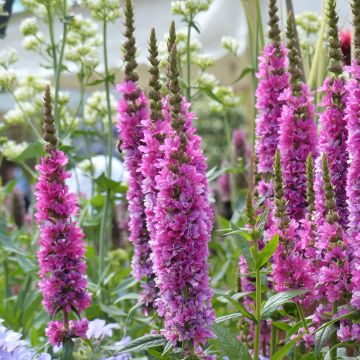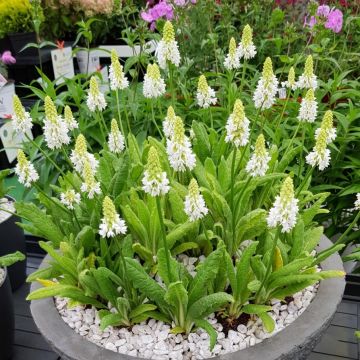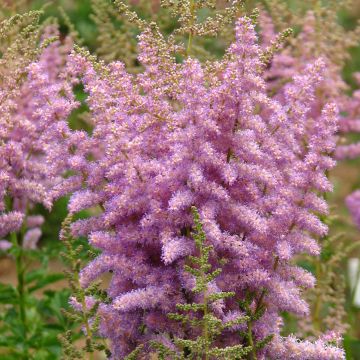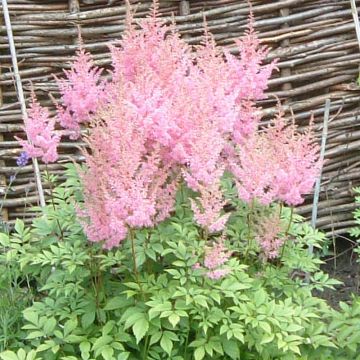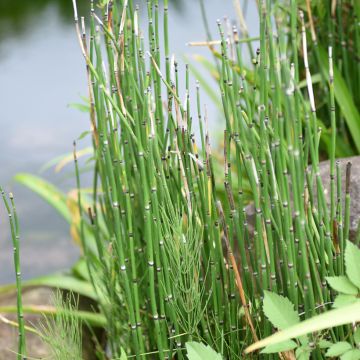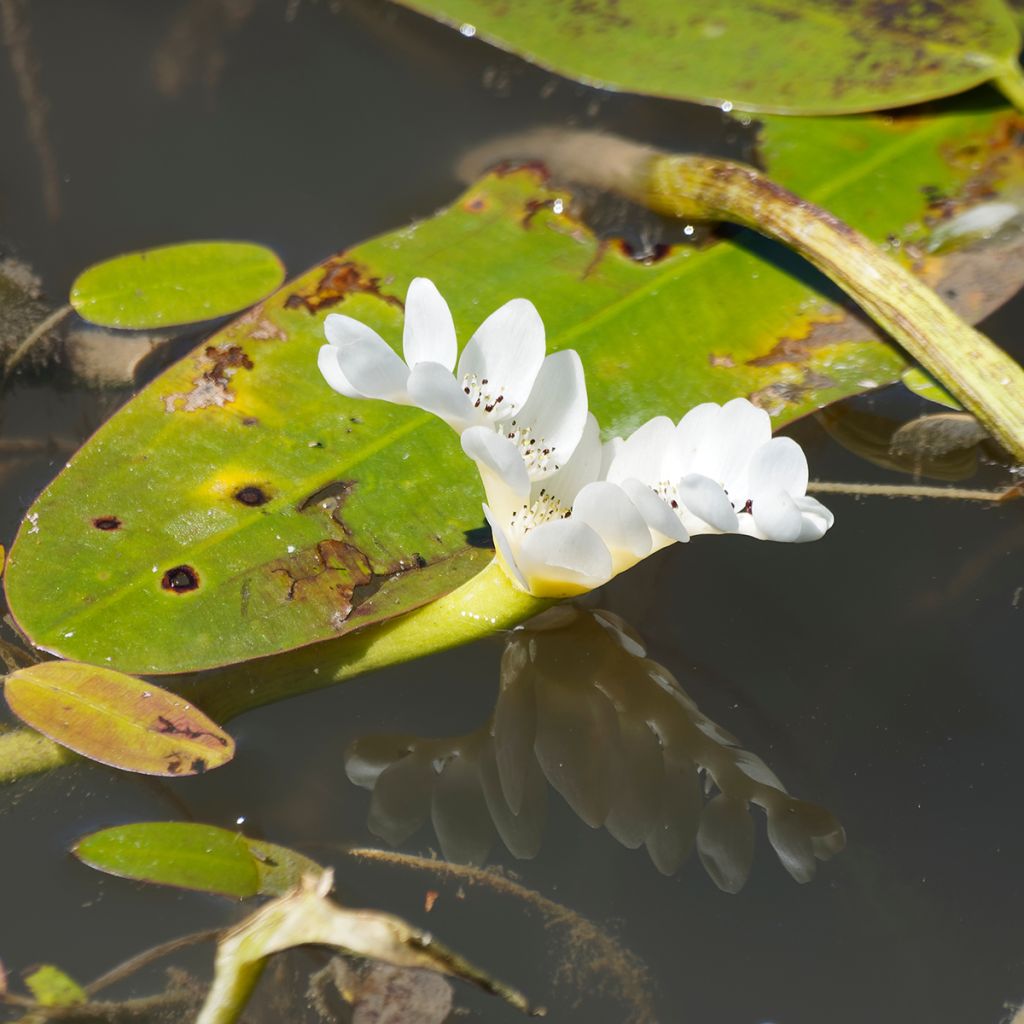

Aponogeton distachyos
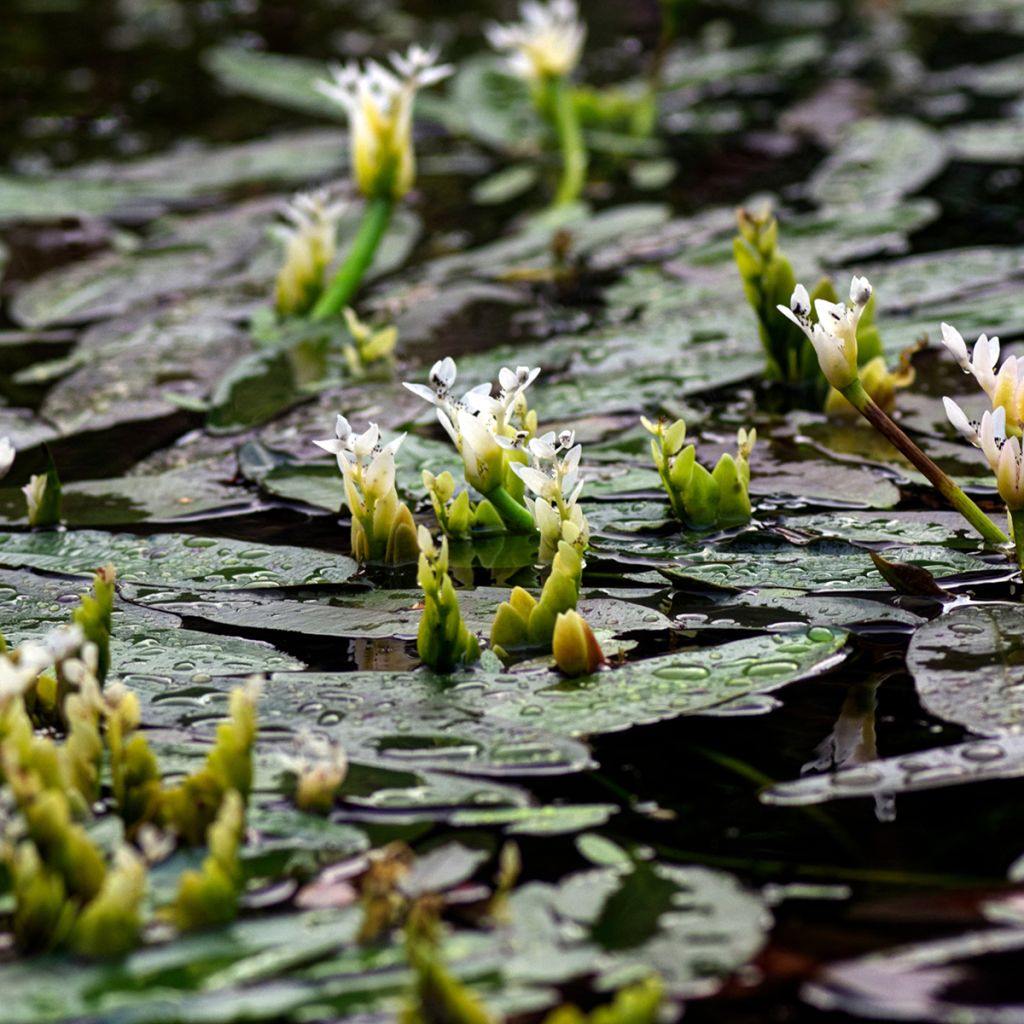

Aponogeton distachyos
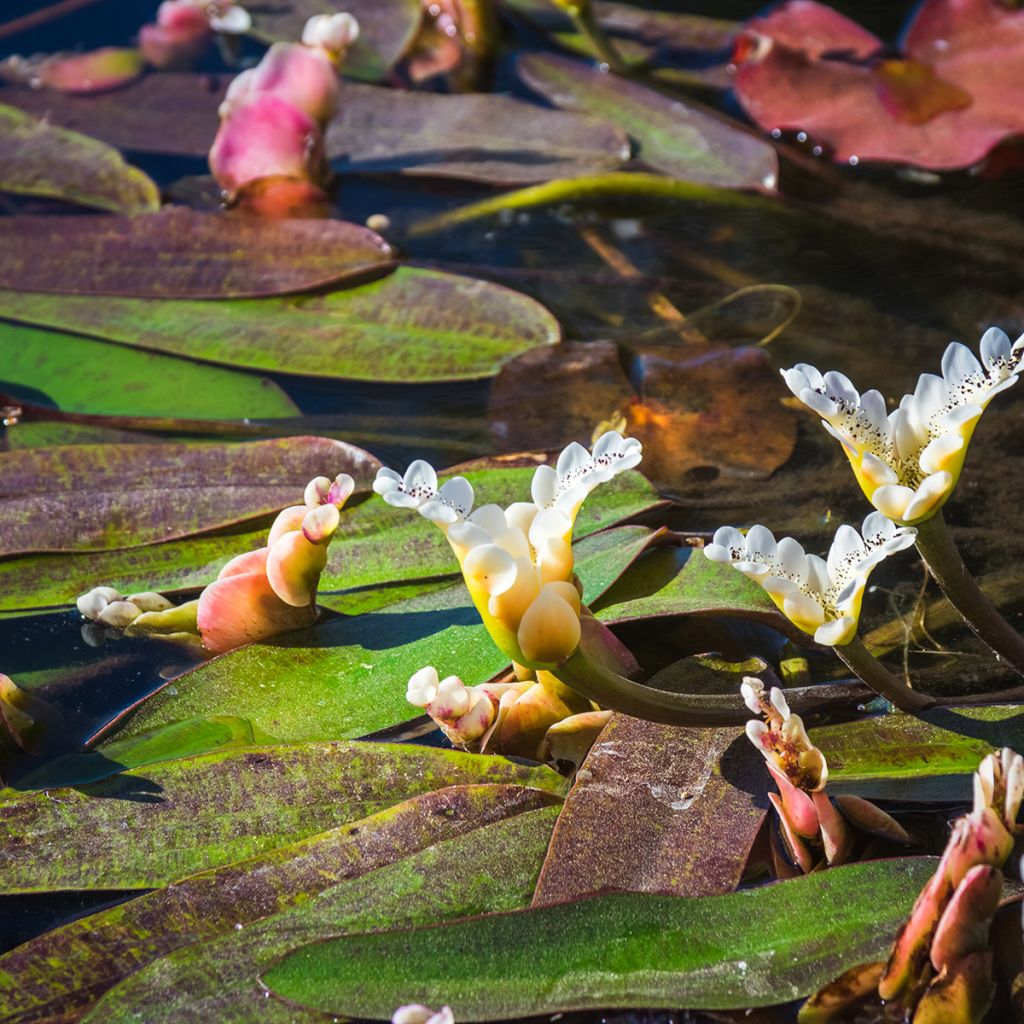

Aponogeton distachyos
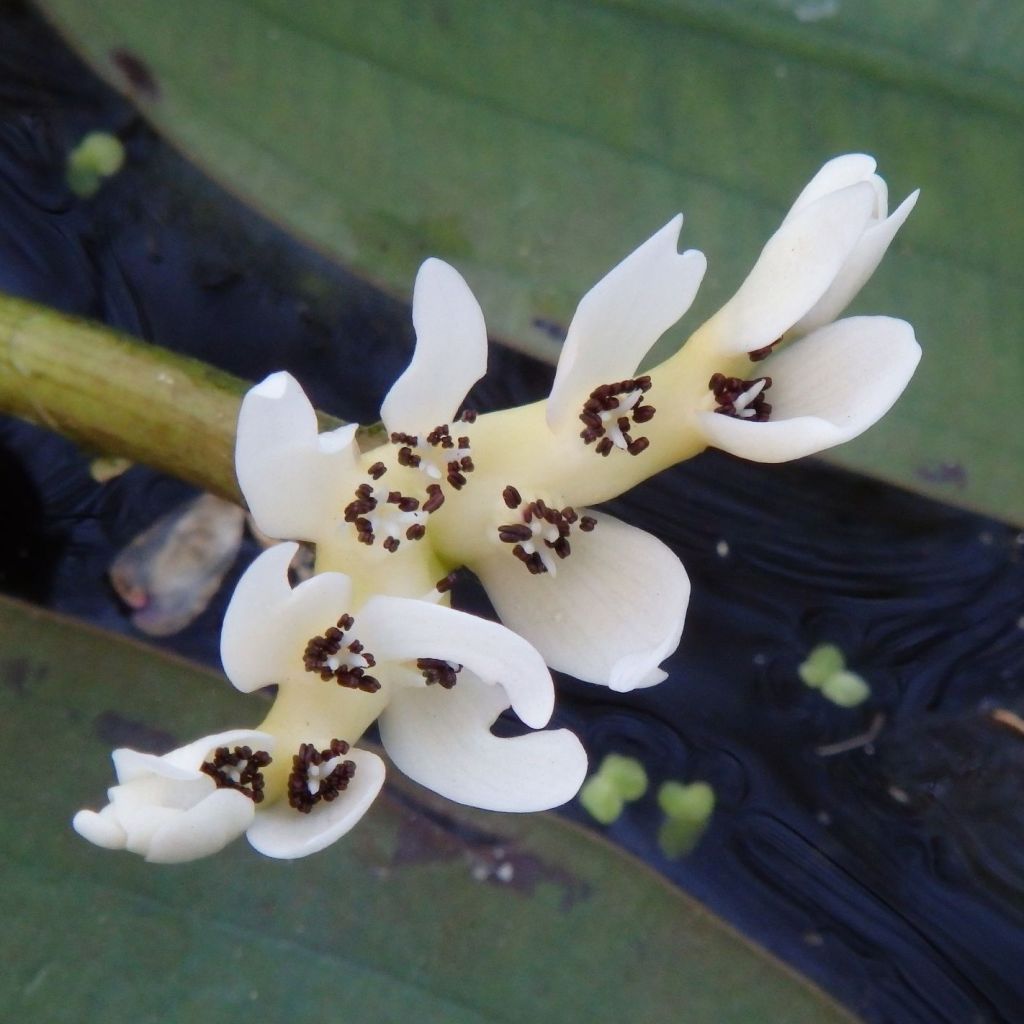

Aponogeton distachyos
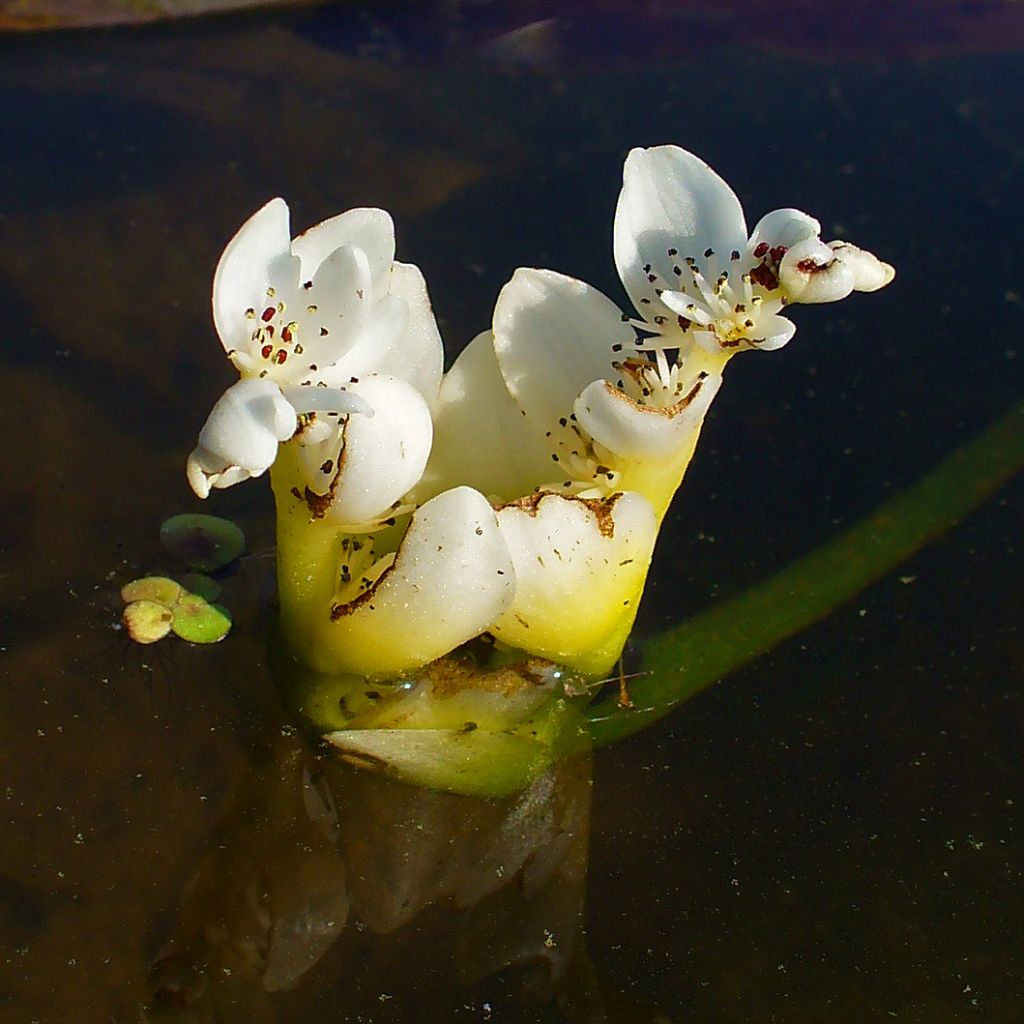

Aponogeton distachyos


Aponogeton distachyos
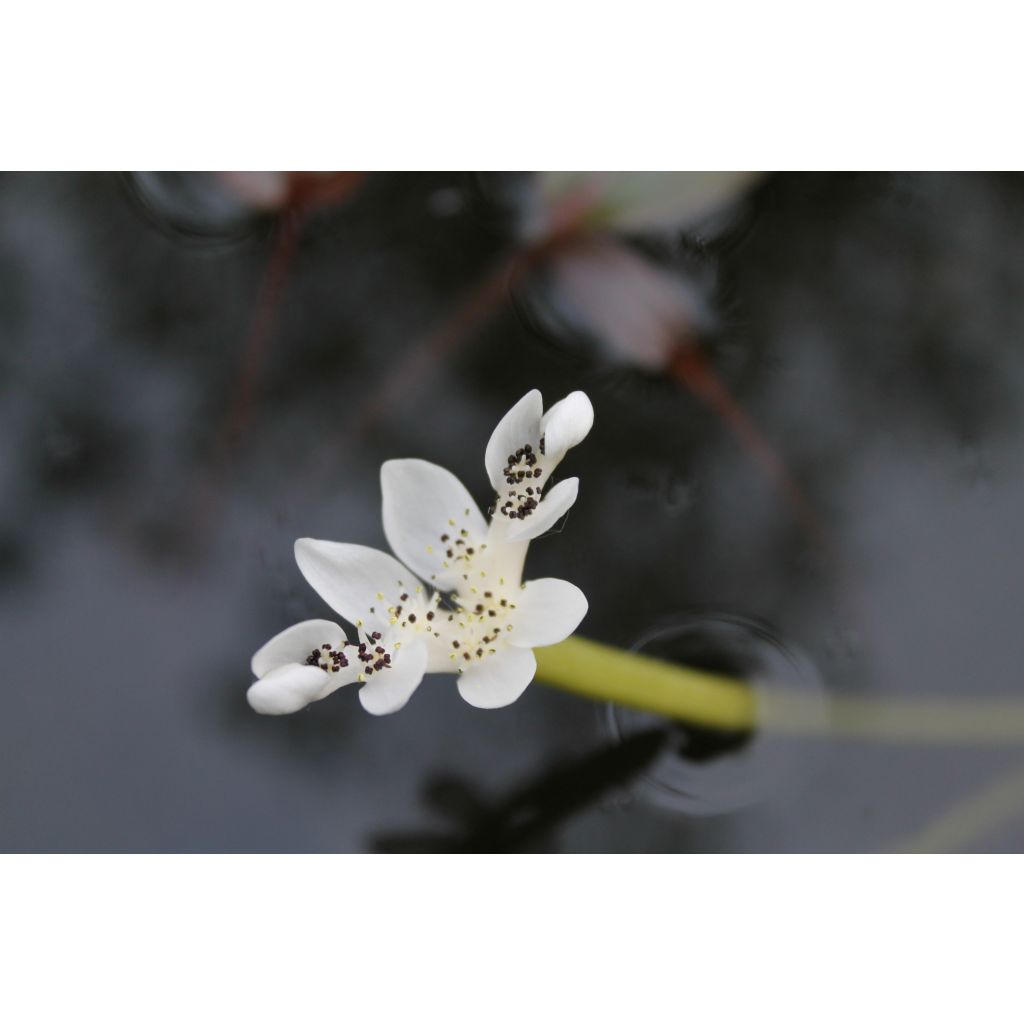

Aponogeton distachyos
Aponogeton distachyos
Aponogeton distachyos
Water Hawthorn, Cape Pondweed
The package arrived in good condition and the young plants were very well packaged. At first, I was surprised by this plant because all I could see in the bucket were pebbles, compared to the others where a few leaves were visible. But 3 or 4 days later, lots of small shoots appeared in 3 groups, so I assume you put 3 shoots in the bucket. And now, after 3 weeks, there are about twenty floating leaves and 3 flowers. I'm really pleased with this purchase. I'll send you a photo.
BRUNO, 27/07/2021
Why not try an alternative variety in stock?
View all →This plant carries a 12 months recovery warranty
More information
We guarantee the quality of our plants for a full growing cycle, and will replace at our expense any plant that fails to recover under normal climatic and planting conditions.
From €5.90 for pickup delivery and €6.90 for home delivery
Express home delivery from €8.90.
From €5.90 for pickup delivery and €6.90 for home delivery
Express home delivery from €8.90.
Does this plant fit my garden?
Set up your Plantfit profile →
Description
Aponogeton distachyos is a magnificent aquatic plant with floating leaves that fan out around the flowers. The large white fleshy bracts reveal a vanilla scent in the evening. This plant develops and blooms out of season. Its magnificent flowering resembles orchids, and it shines during the short days of the year, especially in late winter. Original and of great beauty, it can be used in small ponds as well as large areas or large colonies for a shady pond where water lilies fail.
The fragrant water hawthorn belongs to the family of Aponogetonaceae. It is native to South Africa and was introduced to Europe in the 17th century. It has escaped into the wild and has become naturalised in Australia and more locally in France and England. It is an aquatic plant that grows from a tuberous rhizome. It forms clumps 80 cm (32in) in diameter, emerging from 10 cm (4in) above the water. From late spring to autumn, and sometimes in winter, flower spikes appear just above the surface, in the shape of a Y, with a length of 6 cm (2in), with a vanilla and hawthorn scent, 5 to 10 cm (2 to 4in) long. The very fragrant flowers attract thousands of bees. Initially white and waxy, they turn green with age and curve downwards to plunge into the water, where the fruit ripens. The plant usually goes dormant in summer. During a mild winter, flowers can continue to appear intermittently. The leaves of the water hawthorn are initially submerged, then floating, and have a petiole 50 to 200 cm (20 to 79in) long. They are dark green, 6 to 25 cm (2 to 10in) long and 1.5 to 7.7 cm (1 to 3in) wide, oblong, ribbed, glabrous and smooth on the upper surface, rough on the lower surface, with a long sheathing petiole. The foliage is evergreen.
The water hawthorn enjoys sunlight but tolerates shade perfectly. It prefers fresh and calm water, is sensitive to frost, and its hardiness reaches -10 °C (14°F). To grow water hawthorn, it is best to plant it below the freezing water level during winter. If this is not possible, rhizomes can be dug up and kept frost-free in a container filled with water. The plant usually grows in calm waters of ponds in subtropical climates, where winter and autumn precipitation are significant, and summer dries up water points. If planted in a shady area, it will bloom from April until the first frost. Koi carp are attracted to the fragrant water hawthorn, so it is advisable to protect young plants from fish using a physical barrier, such as a mesh.
The water hawthorn has a lovely fragrance and is an excellent choice for ponds that don't get enough sunlight for water lilies. It's best suited for medium to large ponds and can be used alone or with Thalia to cover the ground. Be careful not to plant it too close to water lilies, as its dense foliage can suffocate them. This plant blooms in a unique way compared to other plants in its natural habitat. Schizostylis also grows by the pond's edge.
Report an error about the product description
Aponogeton distachyos in pictures
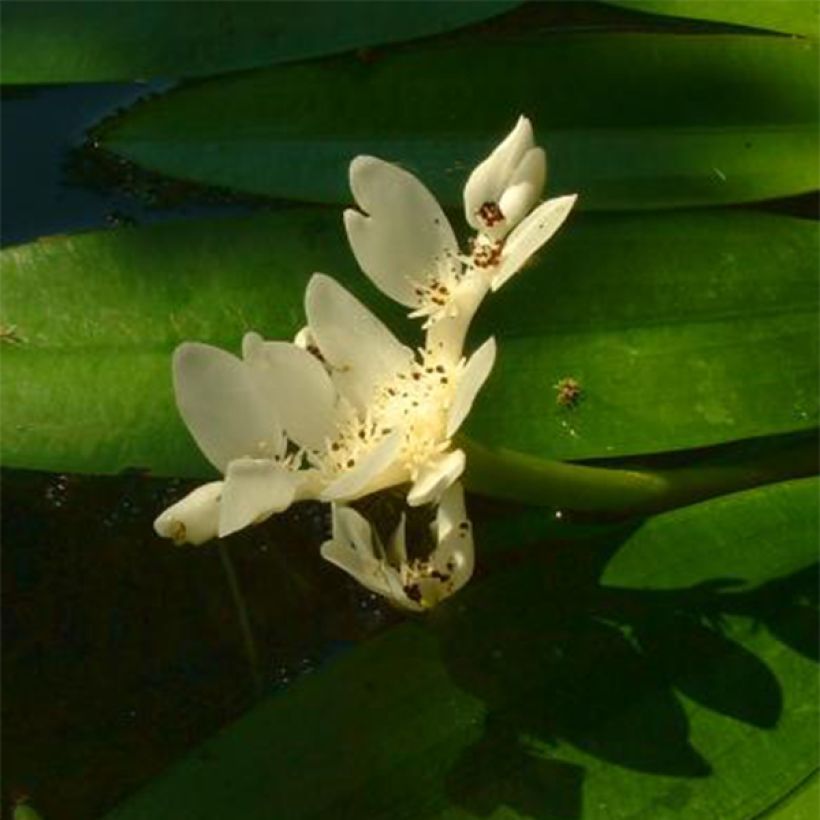

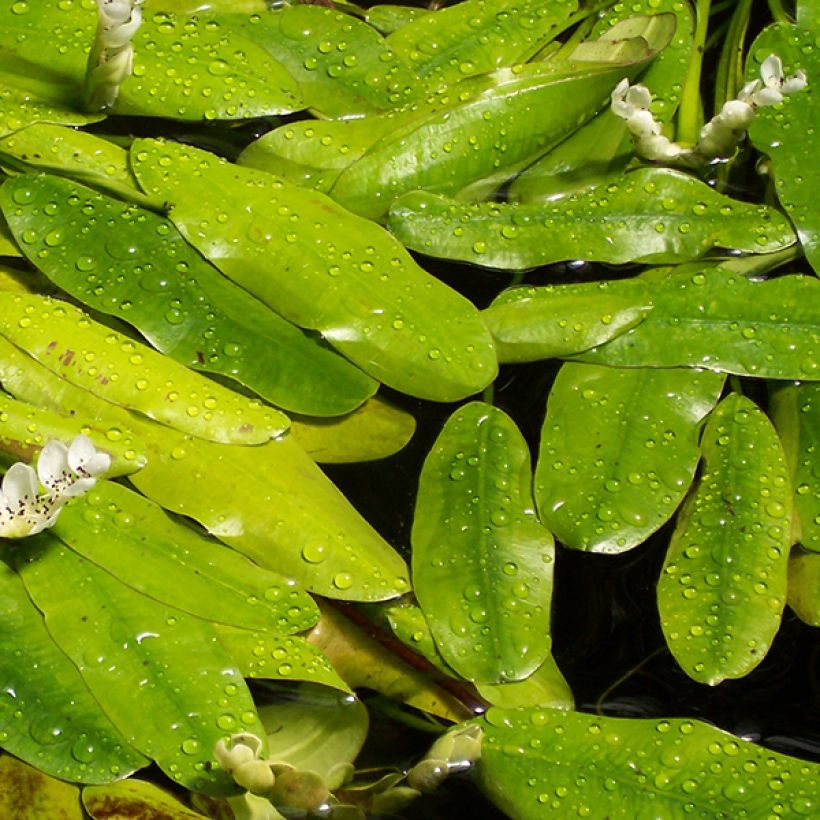

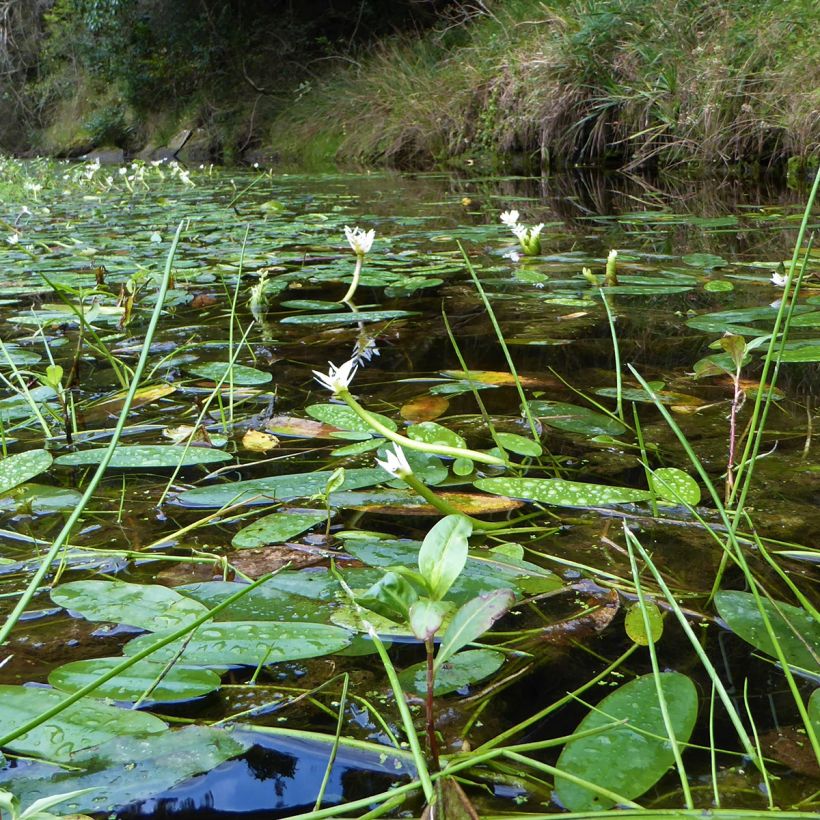

Flowering
Foliage
Plant habit
Botanical data
Aponogeton
distachyos
Aponogetonaceae
Water Hawthorn, Cape Pondweed
South Africa
Other Aquatic perennials
Planting and care
Aponogeton distachyos is a plant that can grow in full sun, partial shade, or even full shade. It prefers rich soil and under 20 to 50 cm (8 to 20 in) of water. While it doesn't demand high water quality, it does prefer soft water. If you're lucky enough to have a natural pond, you can plant the rooted plants in a basket or at the bottom of a vase. The soil should be heavy and clayey so it doesn't dissolve in water.
This plant is sensitive to frost, so it should be planted below the freezing water level in winter. Alternatively, rhizomes can be dug up and overwintered in a container filled with water. You should avoid planting the water spike in a current of water because its seeds float and can germinate on the surface of the water, causing the plant to invade the water body. However, in a closed pond, there is no problem.
If you plan to keep Koi carp in the pond, they seem to like the fragrant aponogeton. Therefore, it would be wise to protect the young plants from the fish with a physical barrier (e.g. a mesh). Water snails are fond of young plants, so you should consider them when planting.
Planting period
Intended location
Care
-
, onOrder confirmed
Reply from on Promesse de fleurs
Aquatic plants
Haven't found what you were looking for?
Hardiness is the lowest winter temperature a plant can endure without suffering serious damage or even dying. However, hardiness is affected by location (a sheltered area, such as a patio), protection (winter cover) and soil type (hardiness is improved by well-drained soil).

Photo Sharing Terms & Conditions
In order to encourage gardeners to interact and share their experiences, Promesse de fleurs offers various media enabling content to be uploaded onto its Site - in particular via the ‘Photo sharing’ module.
The User agrees to refrain from:
- Posting any content that is illegal, prejudicial, insulting, racist, inciteful to hatred, revisionist, contrary to public decency, that infringes on privacy or on the privacy rights of third parties, in particular the publicity rights of persons and goods, intellectual property rights, or the right to privacy.
- Submitting content on behalf of a third party;
- Impersonate the identity of a third party and/or publish any personal information about a third party;
In general, the User undertakes to refrain from any unethical behaviour.
All Content (in particular text, comments, files, images, photos, videos, creative works, etc.), which may be subject to property or intellectual property rights, image or other private rights, shall remain the property of the User, subject to the limited rights granted by the terms of the licence granted by Promesse de fleurs as stated below. Users are at liberty to publish or not to publish such Content on the Site, notably via the ‘Photo Sharing’ facility, and accept that this Content shall be made public and freely accessible, notably on the Internet.
Users further acknowledge, undertake to have ,and guarantee that they hold all necessary rights and permissions to publish such material on the Site, in particular with regard to the legislation in force pertaining to any privacy, property, intellectual property, image, or contractual rights, or rights of any other nature. By publishing such Content on the Site, Users acknowledge accepting full liability as publishers of the Content within the meaning of the law, and grant Promesse de fleurs, free of charge, an inclusive, worldwide licence for the said Content for the entire duration of its publication, including all reproduction, representation, up/downloading, displaying, performing, transmission, and storage rights.
Users also grant permission for their name to be linked to the Content and accept that this link may not always be made available.
By engaging in posting material, Users consent to their Content becoming automatically accessible on the Internet, in particular on other sites and/or blogs and/or web pages of the Promesse de fleurs site, including in particular social pages and the Promesse de fleurs catalogue.
Users may secure the removal of entrusted content free of charge by issuing a simple request via our contact form.
The flowering period indicated on our website applies to countries and regions located in USDA zone 8 (France, the United Kingdom, Ireland, the Netherlands, etc.)
It will vary according to where you live:
- In zones 9 to 10 (Italy, Spain, Greece, etc.), flowering will occur about 2 to 4 weeks earlier.
- In zones 6 to 7 (Germany, Poland, Slovenia, and lower mountainous regions), flowering will be delayed by 2 to 3 weeks.
- In zone 5 (Central Europe, Scandinavia), blooming will be delayed by 3 to 5 weeks.
In temperate climates, pruning of spring-flowering shrubs (forsythia, spireas, etc.) should be done just after flowering.
Pruning of summer-flowering shrubs (Indian Lilac, Perovskia, etc.) can be done in winter or spring.
In cold regions as well as with frost-sensitive plants, avoid pruning too early when severe frosts may still occur.
The planting period indicated on our website applies to countries and regions located in USDA zone 8 (France, United Kingdom, Ireland, Netherlands).
It will vary according to where you live:
- In Mediterranean zones (Marseille, Madrid, Milan, etc.), autumn and winter are the best planting periods.
- In continental zones (Strasbourg, Munich, Vienna, etc.), delay planting by 2 to 3 weeks in spring and bring it forward by 2 to 4 weeks in autumn.
- In mountainous regions (the Alps, Pyrenees, Carpathians, etc.), it is best to plant in late spring (May-June) or late summer (August-September).
The harvesting period indicated on our website applies to countries and regions in USDA zone 8 (France, England, Ireland, the Netherlands).
In colder areas (Scandinavia, Poland, Austria...) fruit and vegetable harvests are likely to be delayed by 3-4 weeks.
In warmer areas (Italy, Spain, Greece, etc.), harvesting will probably take place earlier, depending on weather conditions.
The sowing periods indicated on our website apply to countries and regions within USDA Zone 8 (France, UK, Ireland, Netherlands).
In colder areas (Scandinavia, Poland, Austria...), delay any outdoor sowing by 3-4 weeks, or sow under glass.
In warmer climes (Italy, Spain, Greece, etc.), bring outdoor sowing forward by a few weeks.

































